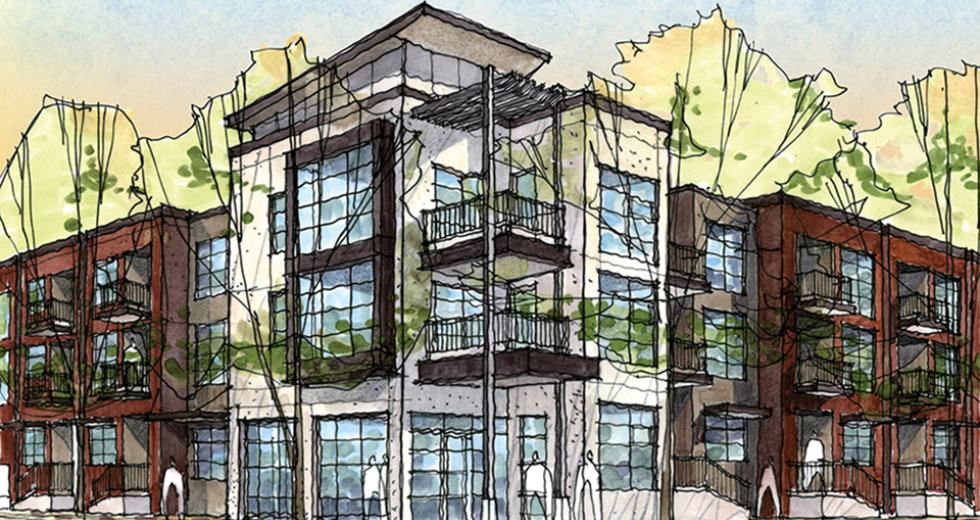Three years ago, Gov. Jerry Brown pulled the plug on local government redevelopment agencies and the estimated $5 billion a year they spend rebuilding inner cities to combat urban blight. The money, he said, would be better used to finance schools and other municipal needs. On the sidelines of that 2011 legislative debate was the Capitol Area Development Authority (CADA), a quasi-redevelopment agency responsible for developing new commercial projects and managing state-owned rental housing on the south side of downtown Sacramento. Now, Brown would like to get the state out of the residential real estate business by selling off those properties. In response, CADA is attempting to reorganize itself so it can preserve the neighborhoods it’s rehabilitated over the past four decades.
But the clock is ticking. In response to Brown’s 2011 budget directive, the Department of General Services (the state’s de facto real estate agent), has drawn up a plan to sell CADA’s residential and commercial property piece by piece over the next decade. Wendy Saunders, CADA’s executive director, believes that would upset a delicate business model that has produced a mix of subsidized affordable and market-rate housing as well as economically energizing commercial development. In addition, a new hodge-podge of property owners could result in uneven upkeep of properties and a potential downturn in the neighborhoods’ character.
“The process has to be different than how the state traditionally sells surplus property,” which is individually to the highest bidder, Saunders says. Instead, she believes the properties CADA controls in downtown Sacramento should be considered a single entity and continue to be managed by one organization. “The stability of the neighborhood is intangible. But if it were lost, the results would be very tangible,” she says, referring to the security, maintenance and graffiti-free environment CADA provides through its management staff and contractors.
Still, Saunders understands why the state wants to get out of the residential real estate business. “The state is good at managing large office buildings,” she says, “but a 4-unit Victorian is not its core business or its cup of tea.”
Ironically, it was Brown who, in his first term as Governor, created CADA in 1978 to clean up blight caused by an overly ambitious state construction plan south of the Capitol that never materialized. In the 1960s, the state bought the 42 blocks of city streets to make room for a Washington, D.C.-like swath of buildings envisioned to accommodate its departments and agencies. Housing in what had been a densely populated neighborhood was demolished, reducing the number of residents in the area from 4,000 to 1,000, according to census data.
But by 1969, only three office buildings had been constructed and the master plan, with eyes bigger than the state’s appetite for space, was dead. The area had already been razed. Empty lots abounded. Many of the remaining buildings, neglected by the state like an absentee landlord, were barely habitable. Assemblyman and former Sacramento County Supervisor Roger Dickinson recalls, “There were a fair number of parking lots on the south side, and it wasn’t a particularly pretty picture.”
Brown formed CADA to stem the tide of decay and rebuild the neighborhood by constructing and managing market-rate and affordable housing for downtown workers. “There was a sense that the Capitol is a unique geographic space and that a public agency was important to shape it,” Dickinson says. “It shouldn’t be left to what the private market would support.”
Dickinson recalls that Brown, ever the champion of new environmental and energy policies, wanted to build modern structures, like the Bateson Building on 9th Street that, for its time, incorporated new and unique architectural features to conserve energy. Although the state curbed its plans for more futuristic buildings, the neighborhood that CADA built is based on what many consider progressive urban policies, mixing housing with commercial development in an area friendly to mass transit. It’s the type of infill development the state now encourages to improve air quality and combat global warming.
“The stability of the neighborhood is intangible. But if it were lost, the results would be very tangible.”
Wendy Saunders, executive director, CADA
But allowing CADA to continue its role requires more than the formation of a joint powers authority or nonprofit. It also involves a delicate financial balancing act to repay taxpayers for the cost of the land CADA has used in this rebuilding. Unlike the former redevelopment agencies, CADA does not use tax dollars to fund its operations. The state-owned land is leased to CADA at no cost. CADA then works with developers to build commercial businesses, such as the restaurants along the R Street corridor, as well as market-rate residential units. The revenue from these projects is used to subsidize the below-market-rate affordable housing that comprises about 25 percent of CADA’s properties.
In order to stave off the piecemeal sale of its hundreds of individual buildings and parcels, CADA must buy the land from the state, reimbursing taxpayers by paying what the state would have made had it originally invested with the State Treasurer’s Office instead of with CADA.
CADA estimates the state’s 1978 rental income would be worth about $14.9 million today. The state has collected about $12 million over the years in lease and property sales revenue. Complicating the financial picture are bonds issued by CADA that won’t be paid until 2035, as well as other long-term debt, such as pensions for its 50-person staff.
Ironically, Brown’s decision for the state to shed properties not part of its core operation comes just as CADA is hitting its stride, developing new projects stymied by the recession. More than 400 new housing units are planned for 2014. Like the Bateson Building of a generation ago, the new CADA projects are innovative and range from zero-net-energy apartments on 16th Street to low-cost live/work lofts repurposed from a long boarded-up state-owned warehouse on R Street.
The shape of any new housing authority has yet to be decided and would require legislation to enact. Regardless, a new CADA must strike a deal with the state to prevent the piecemeal sale of its properties and the potential loss of the affordable housing mandate.
“We can pay for the property by dipping into our reserve funds, but not as much as the state thinks it can get by selling each property to the highest bidder,” Saunders says. But, she contends, if CADA-managed properties end up in the hands of many different individual owners, “the city loses, too, because there is no single entity to take care of things like we do.”
Saunders would like to see CADA operate under the same mission but “with a new set of tools.” That may mean relying on its strength as a property manager for private developers or becoming more of a financial partner in new construction.
Regardless of its form, Saunders is hopeful that the new authority can continue its momentum and preserve the cohesiveness of the neighborhoods it has created. “If we are allowed to continue, we could add 600 more housing units downtown,” she contends, and that would continue to make up for the bulldozers and failed ambitions of an office plan gone bad decades ago.
Recommended For You

Realign. Redevelop.
Counties director Matt Cate thinks California is righting its course
No one can accuse Matt Cate of avoiding the hard jobs. During his four years at the helm of California’s state prisons, he guided the system through some of its toughest times, including historic budget cuts and the implementation of Gov. Jerry Brown’s controversial 2011 realignment plan, which shifted tens of thousands of offenders to local jails and parole supervision.

An R is Born
After three decades, a decaying corridor gets another start
On an early September morning, federal, city and redevelopment officials, among others, gathered at the corner of 10th and R streets to celebrate the beginning of street improvements.



